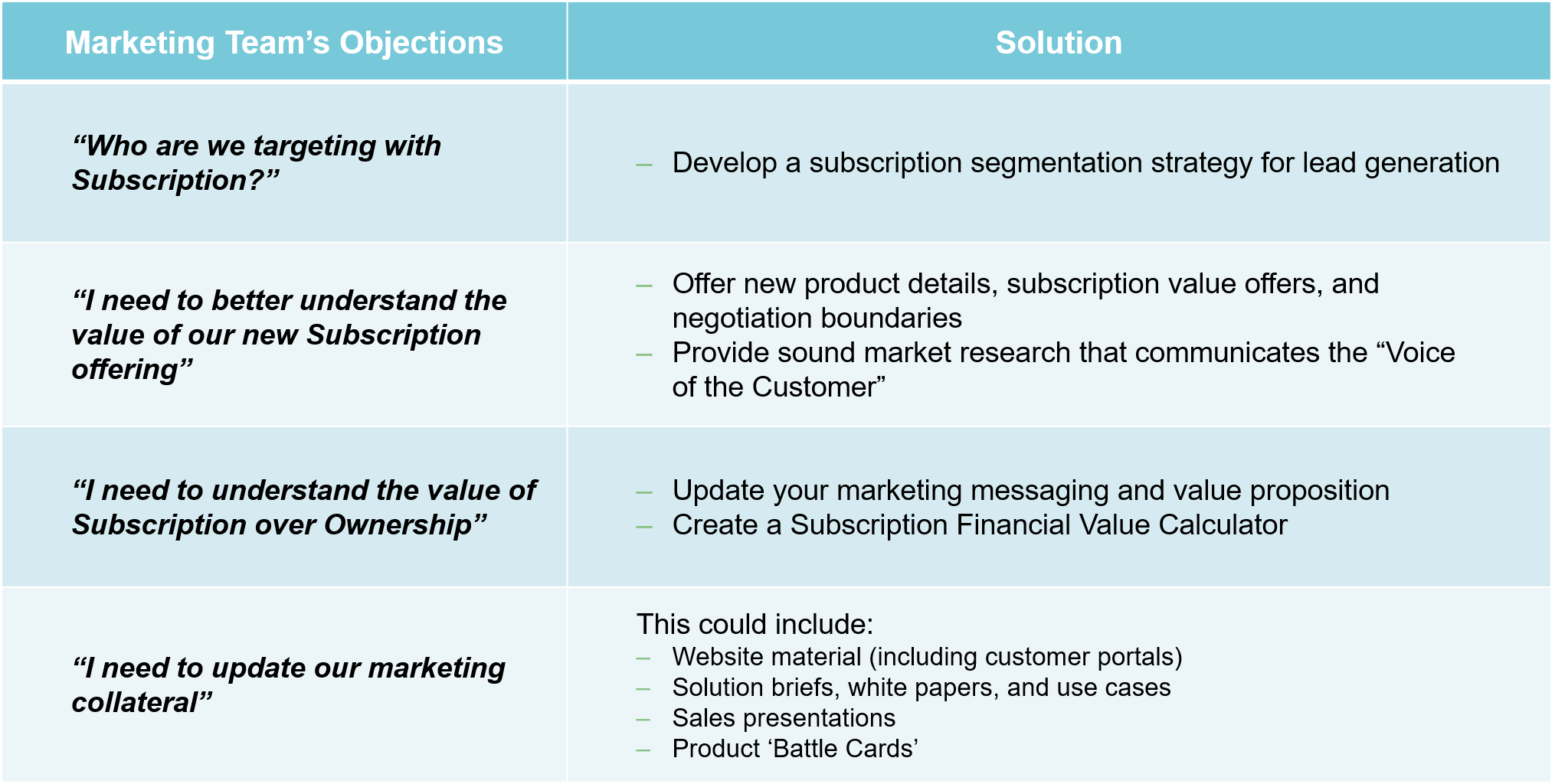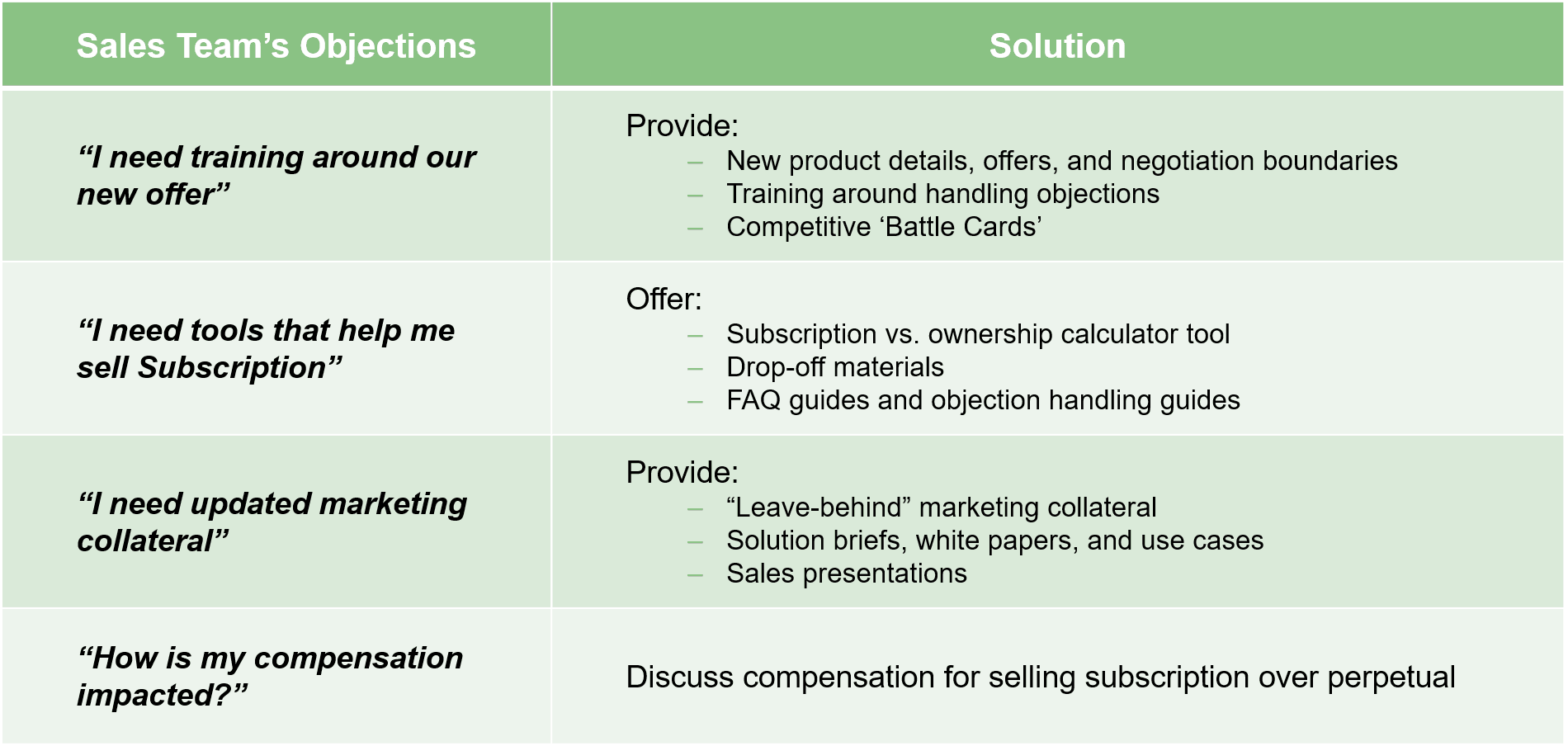By Kirk Jackisch, Global President of Pricing Solutions
Subscription pricing is rapidly spreading across industries and by all accounts has passed the “tipping point” in broad market acceptance. Developing a subscription offer is increasingly not an option, but a requirement for most B2B and B2C businesses today. Competitors are moving there, there is a market opportunity and customers are asking for it. When done right, subscription pricing drives recurring monthly revenue and increases customer intimacy.
Are you prepared to seize the opportunity, or will your business become a casualty of this disruptive pricing model? This article will present an overview of the best practices to follow when implementing subscription pricing.
Showcase the Benefits of Your Subscription Pricing Model
Some companies move to subscription pricing because of customer demand. There’s lots of reasons that customers love subscription pricing, and we often talk to our clients’ customers about subscriptions and their interest in them. Here’s what customers find beneficial about subscription pricing:
-
Lower Cost of Entry
Typically, for customers subscription means a 50-75% lower cost of entry, compared to ownership models.
-
Flexibility to add/subtract as needs change
Think about the Microsoft Office 365 B2B offer. As the employment base can vary monthly at enterprises, the pricing plan is structured around the number of users per month. Customers only pay for what they use.
-
Comprehensive solution provides cost transparency
For example, Porsche Passport provides not only the vehicle, but also insurance, mileage, maintenance and repairs. With their subscription customers get a very comprehensive package that’s full-service and simple. One can literally sign up and drive away without having to worry about anything else. And you can change your vehicle as often as you like.
-
Faster implementation by passing the IT backlog
In the realm of new technology, with a subscription model customers remove their reliance on their IT department, which is typically burdened with managing existing infrastructures and upgrading existing software, etc. Bypassing the IT backlog allows customers to get something up and running in a very short period of time.
-
Do not need to “Rebuy”
Subscriptions allow customers to stay current without having to think about the repurchase cycle on an ongoing basis. Removing the need to rebuy technology services, hard goods, etc. saves time and increases efficiencies.
-
Always on the most current version
With a subscription, customers are always on the most current version. Whether it is digital application or Porsche, customers always have the newest version.
-
OpEx vs CapEx
Increasingly, companies are interested in moving from CapEx to OpEx. Customers are really gravitating towards OpEx and seeing the benefit of being able to transition things off their balance sheet onto their income statement in a timely fashion.
It’s important to consider which of these benefits are most valuable to your customers and then position your subscription offering around these benefits.
You may be interested in this Case Study:
Software As A Service (SaaS) Pricing Strategies

How to Choose the Right Metrics for Your Subscription
Choosing the right metrics to track is perhaps, the most important piece of any subscription pricing offer and strategy. As we help our clients talk about what is the right metric or the best metric, we really think about four different questions:
-
Does it track value?
There are typically a lot of different metrics that track value. Often, the most ideal from the value-tracking perspective becomes less ideal as we layer in the next set of questions here. So, the first question here is always “does it track value”. If it does, it can be considered from a metric perspective.
-
Is it enforceable and measurable?
Often, we would identify metrics that would be great from a value-tracking perspective, but we have no ability or visibility into how they may be implemented on a customer side. If we are not able to measure them and enforce them, it becomes poor metric for our solution.
-
Can we sell it either through our sales organization or channel?
For a company that sells through channels, metrics become even more complicated because we’re dealing with businesses that we don’t have a direct influence over.
-
Can our customers buy this?
Often what we’re dealing with, are the situations where we’re coming up with great metrics that meet the first three criteria, but it’s a new method or metric for our customer base to buy. In those situations, we’re really having to train and educate our customers along the way on that metric and how to use it as much as on the solution itself. So typically, if you can find a metric that your customers are familiar with that you can piggyback on even in a separate area of the business that will be beneficial and really help with gaining traction faster.
Preparing Marketing and Sales Teams
The marketing and sales teams are critical to the successful implementation of your subscription pricing model, and they need support to be successful. Let’s start with the marketing team because they’re going to be the first folks who will take your subscription pricing model to market. Have answers ready for the questions that they might have, which often include:

Offer support to your Sales Team through training, tools and marketing collateral and be prepared to answer questions about their compensation:






